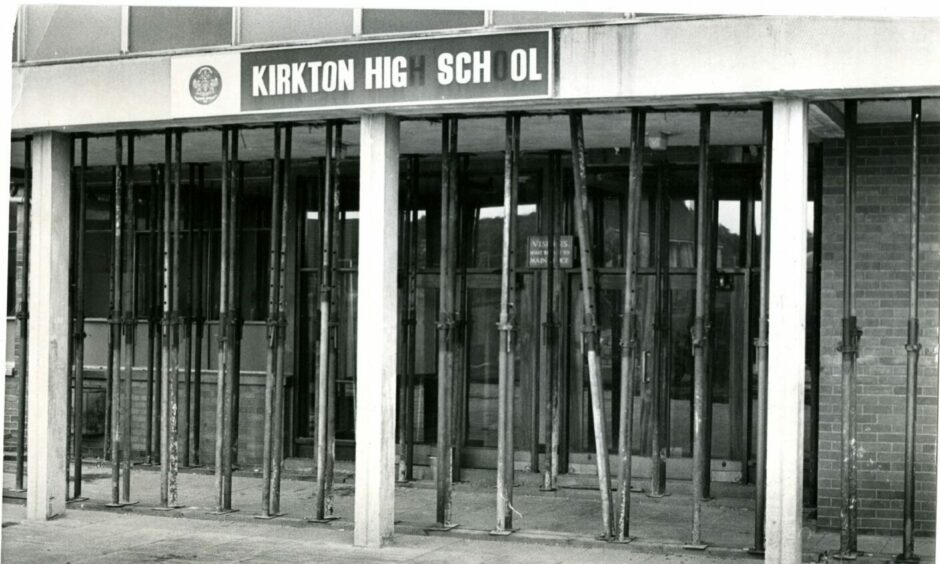
Today’s crumbling concrete crisis seems remarkably similar to the dodgy cement debacle which closed Dundee’s Kirkton High School 50 years ago.
Then, dozens of structures containing pre-cast high alumina cement (HAC) had to be strengthened or rebuilt at vast expense.
The rapid-hardening cement was used extensively in the UK from the 1960s to the early 1970s in the manufacture of pre-cast, pre-stressed concrete beams.
In 1973 disaster struck.
Pre-stressed beams in three different buildings collapsed including the entire roof of the assembly hall at Camden School for Girls, which plummeted to the floor.
Luckily, no-one was hurt.
The UK Government organised a check on schools employing the same building technique that included the 1,500-roll Kirkton High — which was Dundee’s largest.
Kirkton High had opened in October 1960 at a cost of £580,000 and at the time it was said to be the “largest and most modern secondary school in the east of Scotland”.
The Kirkton pupils and 80 members of staff were suddenly given a “special holiday” in October 1973 while the city engineer’s department inspected 330 beams.
Little did they know they would be gone for 30 months.
Education director David Robertson said: “This type of nib-construction is being thoroughly investigated.
“In actual fact, some 50 schools in the city will come under scrutiny, although many of them are not built in this fashion.
“To date, the engineer’s department have checked five schools and cleared them.
“They have been working at Kirkton for three days and because of the need to open up classroom ceilings we feel it would safer if the school was closed for the whole week.”
A decision was then made to close “indefinitely” following the inspection report and the 1,500 pupils were to be shunted elsewhere while remedial work was carried out.
New homes for Kirkton High pupils due to cement debacle
Contingency plans were drawn up.
The 280 first-year pupils shared accommodation at Logie Secondary School.
The 660 S3 and S4 pupils were housed between Douglas Primary School and the Douglas Community Centre where activities would be “seriously curtailed”.
Various displaced groups and clubs were now homeless but the education committee were assured that consideration would be given to finding them new accommodation.
The plan was for the S3 and S4 pupils to eventually move to St Saviour’s High School which was under construction and due to open in December 1973.
The 550 S4, S5 and S6 roll moved to what was formerly Stobswell Girls’ School where existing pupils moved to the former boys’ school building and Molison Street annexe.
A meeting of Kirkton High parents at Lawside Academy was informed that transport would be provided and the school day would be shortened from 9.30pm until 3.30pm.
It was likely that Kirkton High would be closed for some “considerable period” because they “could not take the risk of a child wandering into areas which were not safe”.
Investigation and remedial work would be carried out in three sections of the school building although the work was expected to take between 18 months and two years.
The potential dangers were brought home pointedly in February 1974.
A pre-cast pre-stressed concrete roof beam over a swimming pool at a Stepney school collapsed with very little warning.
A second beam fell later.
Again, purely by chance nobody was killed or injured.
This failure unsurprisingly heralded the beginning of the end for HAC in Britain and eventually led to HAC being deleted from the reinforced concrete Code of Practice.
In May 1974 Dundee Corporation gave the go-ahead to the first stage of the remedial works covering just under one third of the school area at a cost of £300,000.
The council used “borrowing powers” to get the work started but stressed every “effort would be made to recover expenditure” from the firms involved in the construction.
Dundee East MP Gordon Wilson raised the matter of the dodgy cement with Scottish Secretary William Ross in the House of Commons in June 1974.
He asked Mr Ross to provide a list of the schools in Scotland which were affected by the collapse-prone concrete and what advice was now being given to local authorities.
“Only Kirkton High School has been reported to my department as being seriously affected by structural defects similar to those found in the Camden School for Girls.
“The estimated cost of the first phase of remedial works is £300,000.”
Mr Ross said checks revealed structural faults “not requiring extensive remedial works at some other schools” which were not identified as arising from the use of HAC.
He said no defects of the kind found in Stepney “have so far been brought to my notice” but local authorities were given “technical advice” on assessing “suspect structures”.
Repairs would cost £1 million
Scaffolding propped up every roof while remedial work started with construction vehicles becoming a familiar sight in Kirkton over the coming months.
London-based Trussed Concrete Steel Company was the main contractor and had a claim lodged against them by Dundee Education Authority in September 1974.
Things took a further twist in April 1975.
Scottish Secretary William Ross said 19 schools and five housing developments had now been identified as using HAC — including St John’s High in Dundee.
Tayside Education Committee in December 1975 was told the total cost of the remedial works for St John’s was £650,000.
The Courier said the committee was assured that the region’s solicitor was looking very closely at the question of liability which might fall upon the original contractors.
“The need for repairs follows an investigation of the fabric of the school when it was discovered there are serious cultural problems and high alumina cement failure.
“Structural tests have shown that the school is less severely affected by high alumina cement failure than was Kirkton High School.
“Consequently a phased programme of remedial work has been prepared by the consultant engineers and consultation with officials which will allow the school to continue to function.”
Was Kirkton High School cursed?
They would need to have deep pockets.
The total cost for the Kirkton High School work was £1,008,140 following a £637,500 bill for the subsequent phases which included consultants’ fees and other items.
The work was completed after 30 months and the school roll reached 1,789 pupils in August 1977 before tragedy struck the refurbished building on November 5 1978.
A fire which was started deliberately by two youths caused £60,000 of damage and destroyed the school library and careers department and its contents.
It was a terrible scene with flames leaping 20 feet into the air but thankfully the building was fully restored and pupils did not require to be decanted elsewhere.
Further change was on the horizon in the 1980s.
From Kirkton High School to Baldragon Academy
Kirkton High made history when it became the first school in Scotland to stop dishing out beatings to children and consigned the belt to history in February 1982.
The school was threatened with closure in 1988 when it was reported that parents and pupils were “attracted to more fashionable schools, which were bursting at the seams”.
The clock was ticking.
A report drawn up by education director Anne Wilson in 1996 earmarked Rockwell High and Linlathen High for summer closure to balance the books.
Rockwell High merged with Kirkton High and became Baldragon Academy in 1997 which opened with a roll of about 750 pupils before changes were in the pipeline again.
The original building was suffering from serious maintenance problems and plans were lodged for a £28.7 million replacement on Harestane Road, which opened in 2018.
Bathgate-based Dem-Master then pulled down the 10 inter-linked buildings in stages using standard and long-reach excavators with 98% of materials being recycled.
The wrecking ball reduced 58 years of history to rubble.
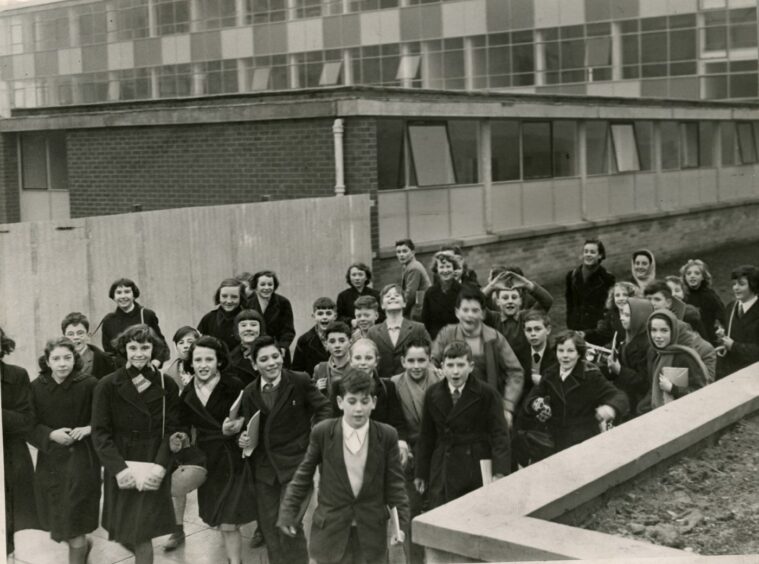
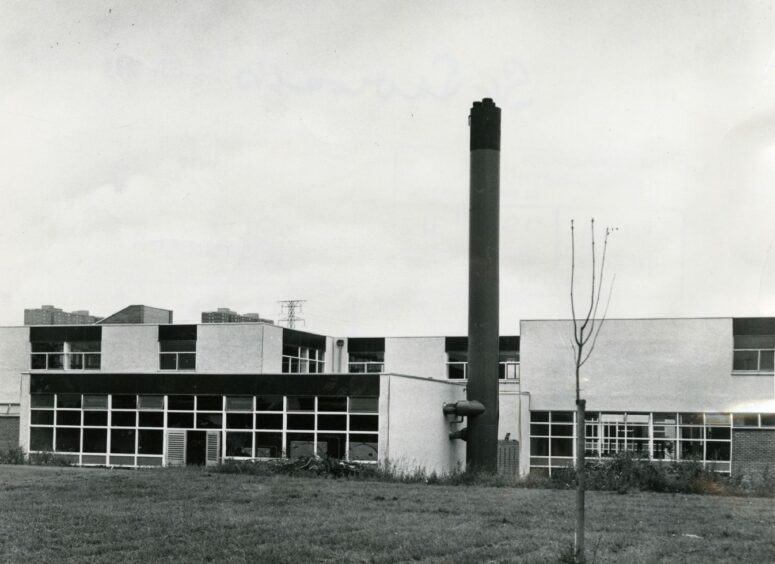
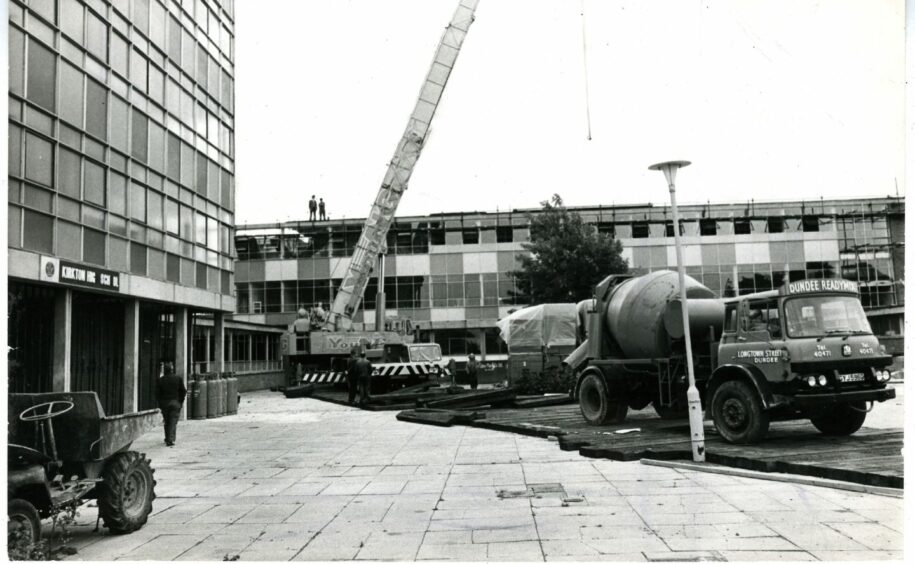
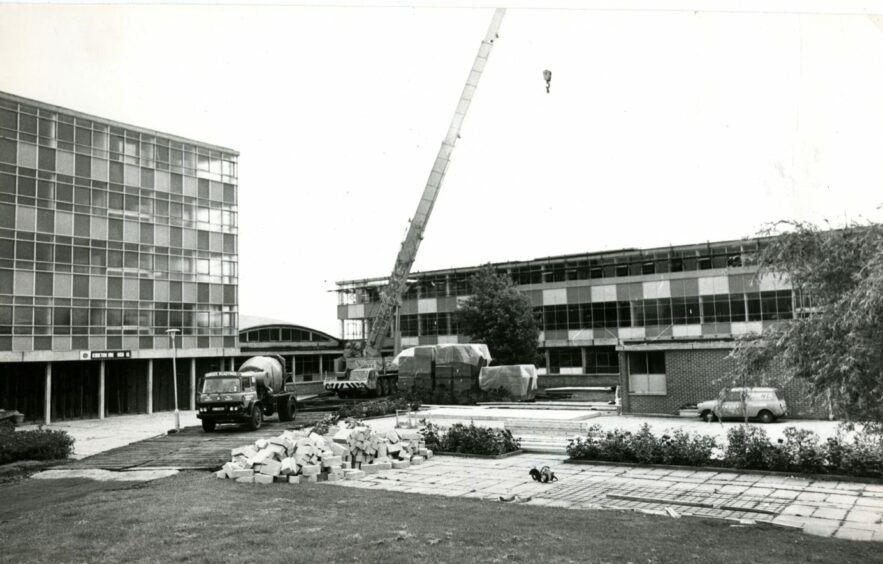
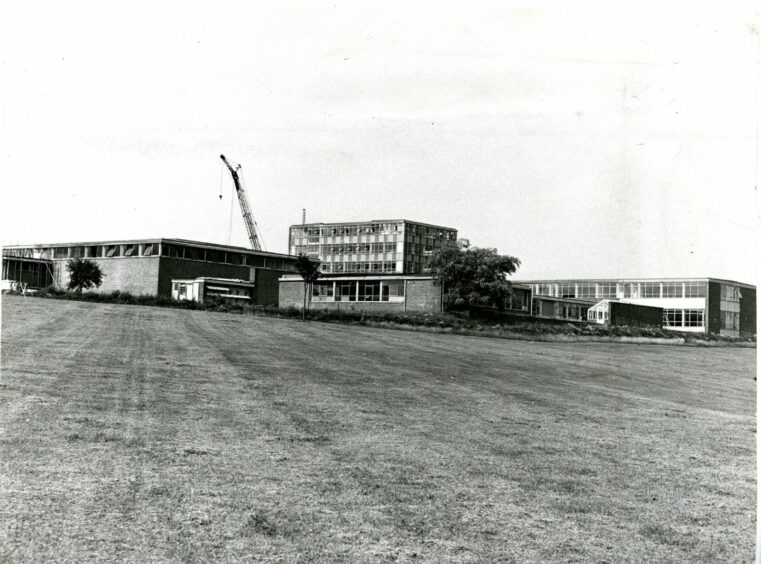
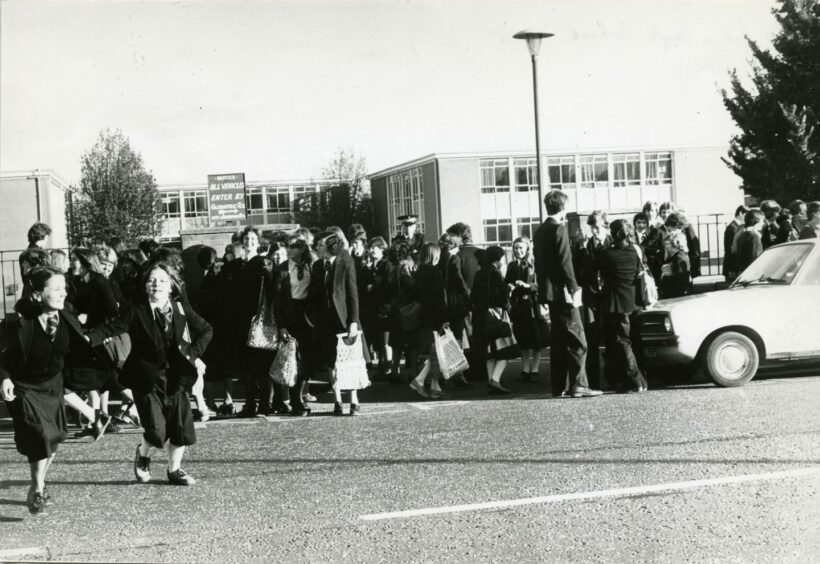
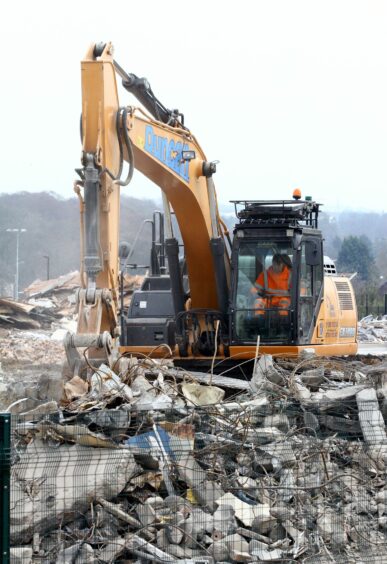
Conversation